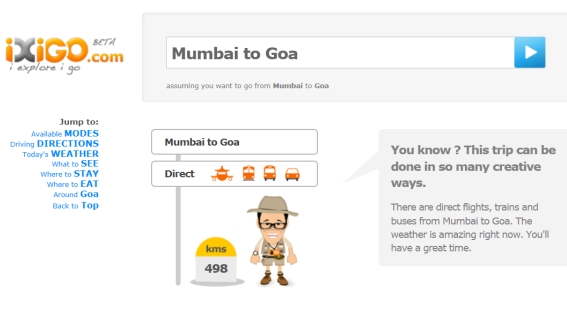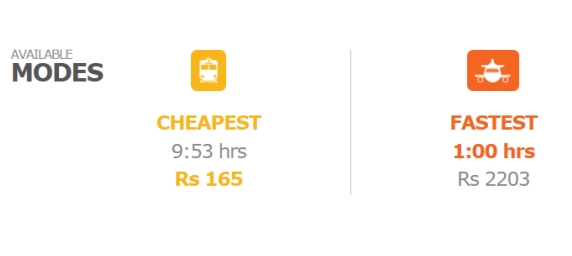A search engine with the human touch
IN-DEPTH India’s travel search engine iXiGO.com has been developing a new offering that allows travellers to discover the cheapest and fastest ways of getting from one town to another. The multi-modal transportation engine attempts to get into the mind of the traveller and even gives options for destinations which cannot be reached by train or plane. Ritesh Gupta finds out more
The Internet accessed from a range of different devices ensures that information we need for our trips is readily available. But even today there are occasions when one can be overwhelmed with the amount of time that is required to finalise something as simple as moving from one place to another. Much of this is down to the fact that that there is too much information fragmented across several websites.
Last week an interesting development emerged. India-based travel search engine iXiGO.com unveiled Trip Planner which it claims is the first-of-its-kind product for, as the name implies, trip planning and travel research. iXiGO says it isn’t responding like horizontal search engines, that respond to user queries in the form of links to pages with information. Rather it has shifted its focus to a visual representation of options. It allows travellers to type a query in natural language and presents a unique infographic for the answer. Everything you could possibly look for is on that one page and they believe the likelihood of arriving at a decision is therefore much higher.

Getting into the mind of the traveller
According to Aloke Bajpai, chief executive and co-founder of the company, iXiGO Trip Planner aims to simplify the travel research and planning process for users. Before a user even makes the decision of meta-search or booking, a traveller typically has a more open ended problem in his or her mind,” he says. For example, ‘what is the best way to reach Jaipur from Delhi?’ or ‘how far is Pune from Mumbai? or even ‘what is the cheapest way to reach Kolkata from Varanasi?’. He might type this into a search engine, or post a question on a forum, but neither of these options may solve the problem or give instant gratification, Bajpaj adds.
Currently making a simple decision such as ‘what is the best way to go from A to B’ within India, travellers have to scan a few dozen websites and forums and are still unsure of what conclusion to draw. Also, in a country like India, there are many destinations which cannot be reached directly by train or flight. Another challenge is that deciding whether to take a taxi, a train and a flight is not always obvious.
“We have attempted India’s first multi-modal transportation engine that takes flights, trains, buses and cars into the mix of transportation suggested. Trip Planner steps in at the research and planning phase and provides users with a one page snapshot of crisp, curated content around the trip and the destination. This includes things like distance, optimal modes of transport, driving directions, places to stay, eat, see and nearby destinations among others.
“All of this is presented in an informative and engaging user interface with capabilities to drill down further on any aspect that a traveller might be interested in,” says Bajpai.

The firm understood that there is too much information on the web. From a traveller’s perspective, it is important to be able to find exactly what one is looking for fairly quickly and get the gist of the answer within seconds. At the same time there should be an option to drill down to deeper options if required. “Our infographic user experience attempts to solve this part of the puzzle,” Bajpaj says.
It is still early days and the site is still in beta. But right now the company is working on improving the nature and number of queries it can handle as well as the set of destinations for which its trip planner works.
Recognising a need
Trip Planner was built to address a real need. This required real innovation which it approached in three ways. Firstly it aimed to understand the query input. The next step was to aggregate and curate relevant information related to the query and then find the right information architecture to show it. Finally, it generated an infographic to present the relevant information.
Bajpaiadmits that execution was not entirely straightforward. Among the challenges were understanding the problem and identifying a solution. To do this, the firm spoke to several users, received feedback, analysed trends and completed several iterations over several weeks before coming up with the product.
Another problem was that there was no precedent. So everything from the multi-modal transportation engine to the content aggregation or curation system had to be built from scratch. There was also a lack of accurate detailed information for many places, routes, modes of transport and so on for many smaller and more remote destinations.
The objective has been to let users converse with the search engine just the way they would converse with a human. Certainly gaining a real understanding of common travel-related queries is a major leap toward that objective.

